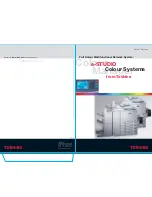
3<B3@>@7A3
2
Example - Multiple Subnets Multiple Server Services
In this example, there are two separate locations.
The following is a list of assumptions that are made regarding this particular example:
• the locations are spread apart and have only a minimal connection to each other
• there is a network administrator at each location who is responsible for looking after Deep
Freeze at that location
• both locations need to be administered from a third location
In this example, the remote consoles are set up at each location and a Server Service is used (represented
by the Server Service Manager icon).
Location 1 uses port 7725 to communicate with the clients and the Server Service. Location 2 uses
port 7724. The console at Location 1 uses port 7723. The console at Location 2 uses port 7722, and the
console at the third site uses port 7721.
The following diagram shows the network topology:
AcP\Sb
AcP\Sb
:]QObW]\CaW\U>]`b/
AcP\Sb
AcP\Sb
:]QObW]\ CaW\U>]`b0
>=@B/
>=@B1
>=@B1
>=@B1
>=@B0
The benefit of this setup is that it allows all the packets sent from the clients at Location 1 to be contained
at that location. The less distance a packet must travel, the less chance there is of the packet failing.
The administrator at Location 1 can connect to the Server Service at Location 1 but cannot connect
to the Server Service at Location 2. The reason for this is that the Location 1 administrator does not
know the password to access the Server Service at Location 2. The same goes for the administrator
at Location 2. At Location 3, if the password to both Server Services is known, the Server Service at
Location 1 and Location 2 can be connected to, in order to administer the clients at both locations.
Clearly, using a Remote Console is a great way to break up network environments to contain
communications to a specific area or break up the network for security purposes.



































